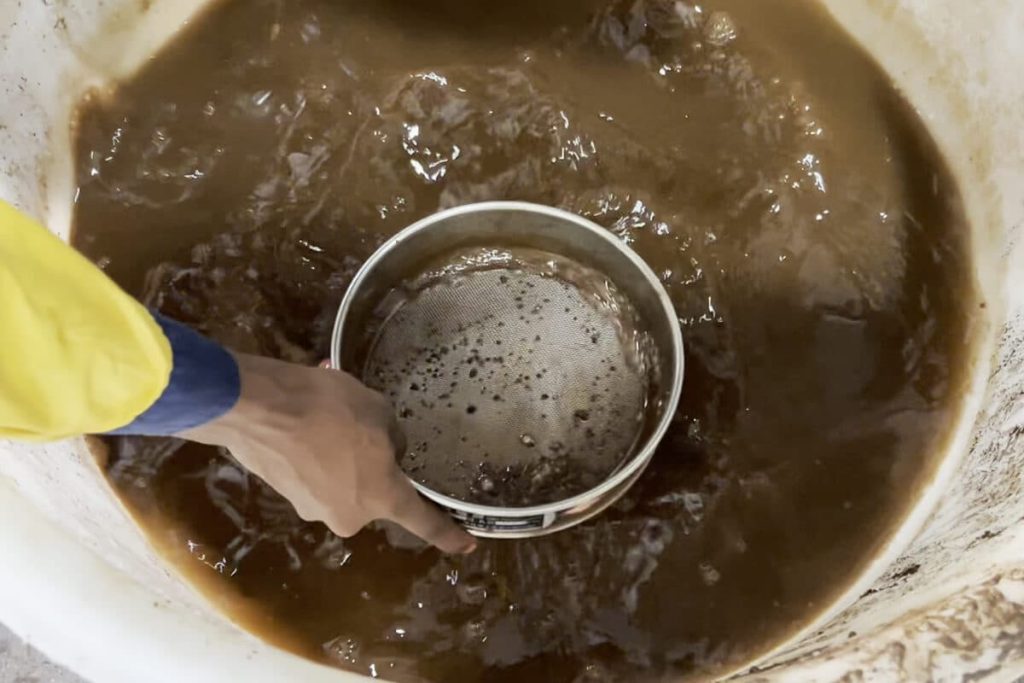Chromite ore is a valuable mineral in various industries, such as metallurgy, refractories, and chemicals. It is a mineral containing chromium with strong anti-corrosion and anti-oxidation capabilities. However, the quality of chromite ore can vary widely depending on the location of its deposit. Demand for chromite ore has grown steadily over the years, but with limited supply, exploring ways to maximize its use is necessary. One way to achieve this is through beneficiation.
However, impurities in chromite deposits present a significant challenge to its efficient utilization. This is where beneficiation comes in – the process of upgrading chromite ore to meet the required specifications for various end uses.
We will conduct detailed analysis and tests on small samples of chromite under controlled conditions in the laboratory, usually involving a variety of techniques involving sample preparation, mineral physical and chemical analysis, crushing, grinding, gravity separation, magnetic separation and so on. These methods are used to determine the optimal processing route for a particular chromite deposit based on its mineralogy, physical properties and chemical composition. Help customers know the mineral composition of the ore and determine the most effective beneficiation technology. The result can provide customers with optimized processing methods to improve the quality of chromite ore to meet its end-use requirements.
Chromite Mineral Analysis
In the laboratory, analyzing the composition of chromite usually requires a battery of physical and chemical tests. Usually, the chromite sample is ground into a fine powder or powder. The homogeneity and representativeness of this part of the sample are ensured, and then the following mineral analysis is carried out.
1. Chemical analysis: Use chemical analysis methods to determine the content of each element in chromite ore. Common methods include wet chemical analysis and instrumental analytical techniques such as atomic absorption spectroscopy (AAS), inductively coupled plasma emission spectroscopy (ICP-OES), and X-ray fluorescence spectroscopy (XRF).
- Chromium content analysis: The chromium oxide method is commonly used. A chromite sample is dissolved in acid, then the chromium is converted to measurably reduced chromium ions by reducing the chromate, and the concentration of the reduced chromium ions is determined using spectrophotometry or atomic absorption spectroscopy.
- Iron content analysis: The analysis of iron can use the composite indicator titration method. Dissolve the ferrochrome ore sample in acid, titrate it with a standard solution, and add an indicator. When iron ions are matched by titrant to form a specific color complex, the color of the critical changes; record the titrant Consumption to calculate iron content.
2. Ore mineral identification: through microscope observation and mineralogy test, determine the type and content of minerals present in chromite. This can be done using optical, scanning electron microscopy (SEM) and X-ray diffraction (XRD).
3. Physical property test: determine the physical properties of chromite, such as density, hardness, magnetic properties, etc. Density can be determined by measuring mass and volume, and hardness can be measured using methods such as the Mohs hardness test or the Rockwell hardness test, and magnetic properties can be measured using a magnetometer or hysteresis loop.
4. Analysis of sulfide content: Chromite sometimes contains sulfide and chemical methods such as iodometric titration, or ferric sulfate reduction can be used to determine the sulfide content.
5. Particle size analysis: Determine the particle size distribution of chromite samples by screening or laser particle size analyzer and other techniques.
The experimental results are calculated and analyzed for the chromium and iron content in the chromite ore, and other analysis results can be integrated simultaneously. After determining the physical and chemical properties of minerals, we can conduct beneficiation tests to determine the best extraction method and process flow of valuable minerals in chromite ore.

Chromite Ore Beneficiation Test
1. Collecting samples: A representative sample is collected from the chromite ore deposit to ensure that the sample is representative and covers the characteristics of the entire deposit.
2. Ore property analysis: Carry out the above chemical analysis and mineralogy identification on the samples to determine the content, binding state and presence of other chromium and iron ore minerals.
3. Magnetic separation test: Mix water and magnetic minerals, and then use a laboratory magnetic separator to remove magnetic minerals, mainly magnetic iron for sorting chromite.
4. Gravity separation test: use gravity separation equipment to carry out the test, such as a laboratory shaking table, spiral chute, etc. According to the different properties of the ore, the samples are subjected to rough selection, medium selection and concentration to separate and enrich chromium ore and iron ore.
5. Flotation test: Flotation test can be carried out for chromite ore containing finer particles. According to the ore properties, choose the appropriate reagents and flotation conditions to improve the flotation effect of chromium ore and iron ore.
6. Tailings treatment: Treat the tailings generated during the mineral processing process, including leaching, dehydration, concentration, etc., to recover and process useful minerals in the tailings and reduce environmental impact.
7. Data summary: According to the experimental results, analyze the effect and feasibility of the beneficiation test, and evaluate the efficiency and economy of extracting chromium ore and iron ore.
Based on the results and analysis of the beneficiation test, design the chromite ore beneficiation process suitable for industrial production, and consider the feasibility and economic benefits of project implementation.
The analysis and beneficiation test of chromite ore can help to optimize the beneficiation process, improve the recovery rate and grade of ore, reduce production costs, save resources, and reduce environmental impact. It also allows for a more accurate assessment of the project’s feasibility and economic potential. According to the test results, the project’s return on investment and profitability can be evaluated, and the basis for further project development can be provided for decision-makers. Our laboratories provide comprehensive beneficiation test to ensure maximum recovery of the valuable mineral. Our team of experienced technicians and metallurgists use the most advanced equipment and technology to analyze the composition of minerals and the effective beneficiation process. Welcome to consult online!
